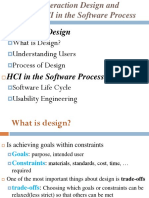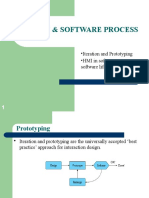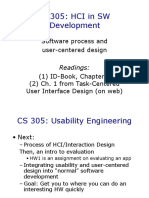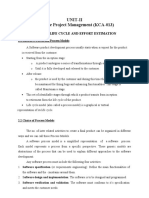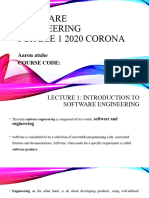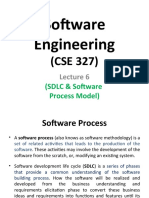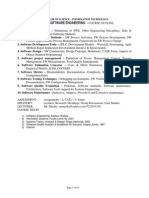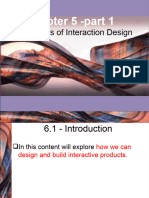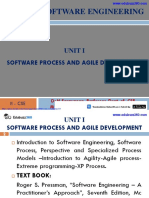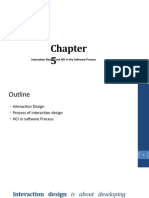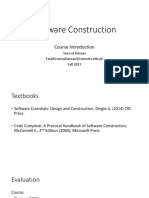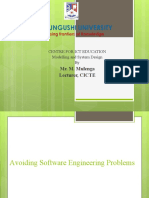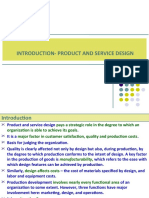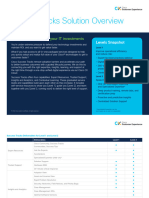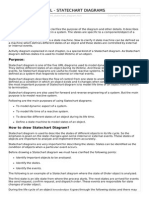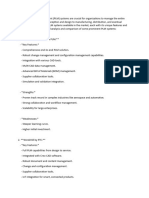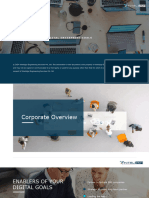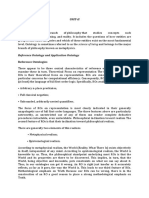0% found this document useful (0 votes)
121 views4 pagesLecture 2 Hci in The Software Process
This document discusses software engineering and the design process for interactive systems. It covers two main models of the software lifecycle: the waterfall model and iterative design/prototyping. The waterfall model involves linear stages like requirements, design, implementation, and testing. Iterative design uses prototypes, user testing, and repeated cycles of design, implementation, and testing to develop requirements. Both approaches have advantages and disadvantages depending on factors like how well understood the problem and interaction paradigm are. The document emphasizes that many real-world systems blend elements of different approaches.
Uploaded by
khangCopyright
© © All Rights Reserved
We take content rights seriously. If you suspect this is your content, claim it here.
Available Formats
Download as PDF, TXT or read online on Scribd
0% found this document useful (0 votes)
121 views4 pagesLecture 2 Hci in The Software Process
This document discusses software engineering and the design process for interactive systems. It covers two main models of the software lifecycle: the waterfall model and iterative design/prototyping. The waterfall model involves linear stages like requirements, design, implementation, and testing. Iterative design uses prototypes, user testing, and repeated cycles of design, implementation, and testing to develop requirements. Both approaches have advantages and disadvantages depending on factors like how well understood the problem and interaction paradigm are. The document emphasizes that many real-world systems blend elements of different approaches.
Uploaded by
khangCopyright
© © All Rights Reserved
We take content rights seriously. If you suspect this is your content, claim it here.
Available Formats
Download as PDF, TXT or read online on Scribd
/ 4



